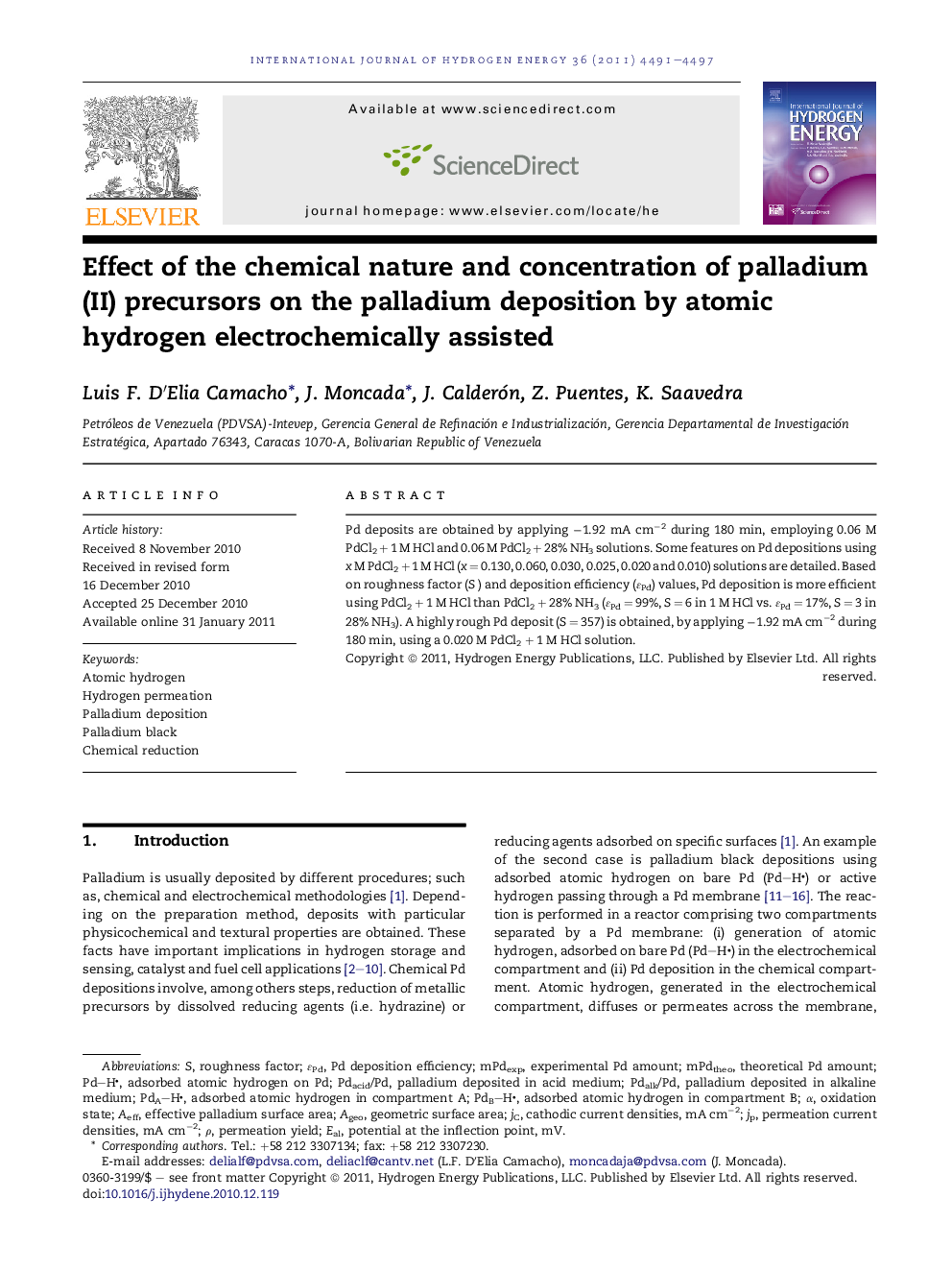| کد مقاله | کد نشریه | سال انتشار | مقاله انگلیسی | نسخه تمام متن |
|---|---|---|---|---|
| 1276238 | 1497586 | 2011 | 7 صفحه PDF | دانلود رایگان |

Pd deposits are obtained by applying −1.92 mA cm−2 during 180 min, employing 0.06 M PdCl2 + 1 M HCl and 0.06 M PdCl2 + 28% NH3 solutions. Some features on Pd depositions using x M PdCl2 + 1 M HCl (x = 0.130, 0.060, 0.030, 0.025, 0.020 and 0.010) solutions are detailed. Based on roughness factor (S) and deposition efficiency (ɛPd) values, Pd deposition is more efficient using PdCl2 + 1 M HCl than PdCl2 + 28% NH3 (ɛPd = 99%, S = 6 in 1 M HCl vs. ɛPd = 17%, S = 3 in 28% NH3). A highly rough Pd deposit (S = 357) is obtained, by applying −1.92 mA cm−2 during 180 min, using a 0.020 M PdCl2 + 1 M HCl solution.
► Assisted Pd electrodeposition is more efficient in HCl than in NH3 solutions.
► Highly rough Pd deposits are obtained using 0.030 M PdCl42− + 1 M HCl.
► Pd deposition efficiencies are affected by PdCl2 concentration.
► Modified Pd membranes are usable for electrochemical assisted hydroconversion.
Journal: International Journal of Hydrogen Energy - Volume 36, Issue 7, April 2011, Pages 4491–4497